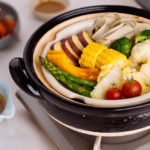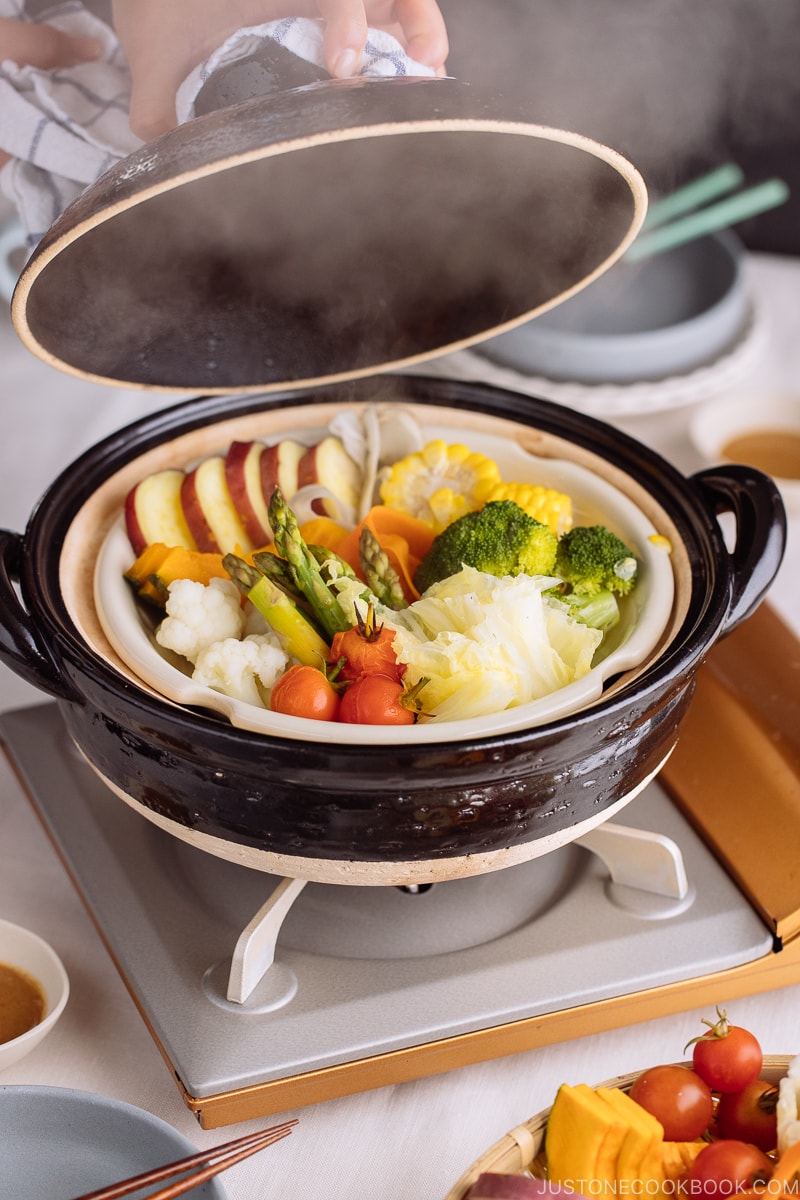
Healthy and full of flavor, this dashi-infused Steamed Vegetables with Miso Sesame Sauce is the quickest way to get vegetables on your plates. Served with an umami-packed dipping sauce, you will want to eat another serving!

How do you eat your vegetables every day? Do you eat it as a salad, stir fry, roasted or steamed, or try to avoid it altogether? Today’s recipe will convince you to eat more of them. You’ll learn how to steam vegetables correctly and whisk together the most delicious miso sesame sauce that makes everything taste even better.
The prep requires little effort that you can steam the veggies while you’re working on other dishes. Sounds great for a weeknight meal, isn’t it? Let’s get started.
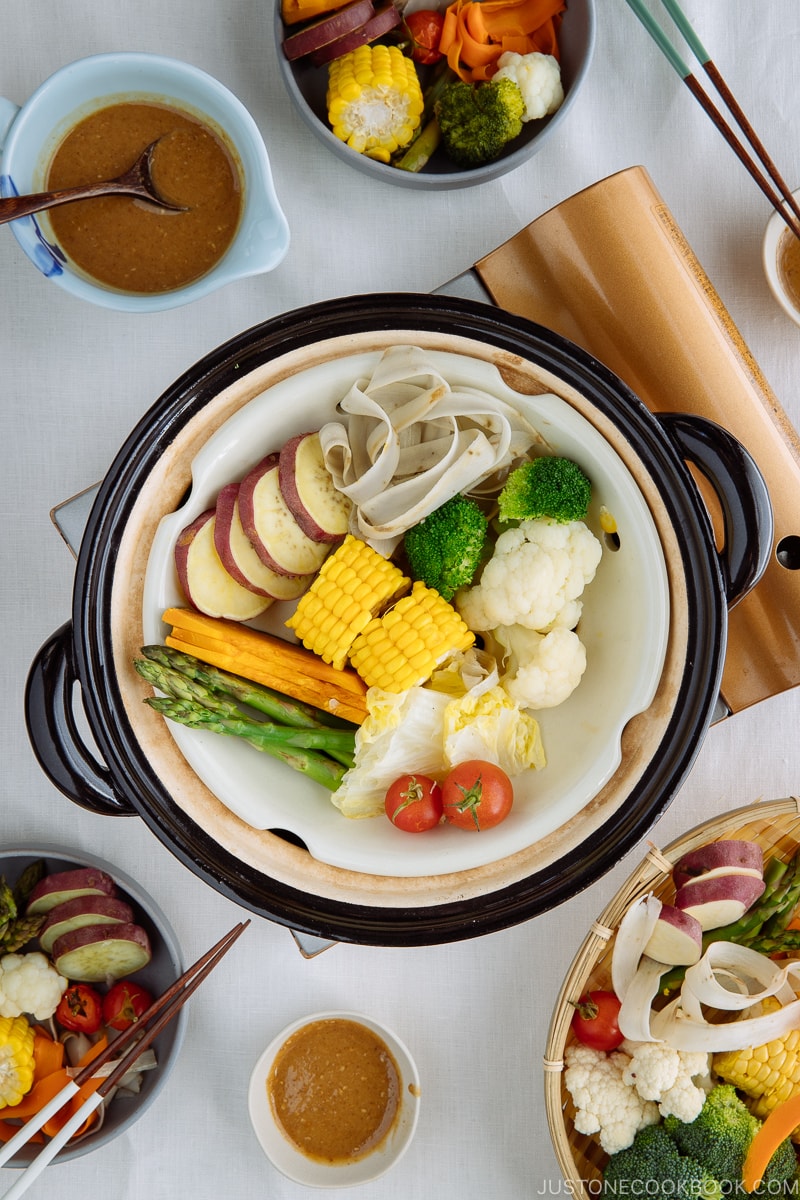
Steaming vegetables is one of the best ways to cook vegetables as steam cooking helps to preserve all the important nutrients and fiber of the vegetables. However, they can be easily overcooked. When the vegetables are over-cooked and mushy, they lose their texture and colors which can be unappetizing.
How do we avoid that? I’m here to guide you on how to perfectly steam any vegetable in a few easy steps.
Texturally speaking, we can group the vegetables into two types: tender vs hard. The harder and denser vegetables require a longer cooking time, while tender vegetables cook a lot faster, so it’s always important to cook them at stages. When you’re steaming vegetables, start with root vegetables such as sweet potato and carrot first, and after several minutes, you can add in tender vegetables like broccoli and zucchini into the basket.
Each vegetable, whether hard or tender, requires the same amount of time to steam. To achieve the perfect crisp-tender texture, you need to cut them into uniform sizes so they cook roughly at the same rate.
One trick to shorten the overall steaming time is to cut the hard vegetables slightly smaller or thinner so that they cook faster.
I also like to take vegetables out of the steamer when they are still a little bit crunchy. The residual heat will cook the vegetables slightly more so you don’t have to steam the vegetables until completely done. By the time you sit at the table, they might be gone mushy.
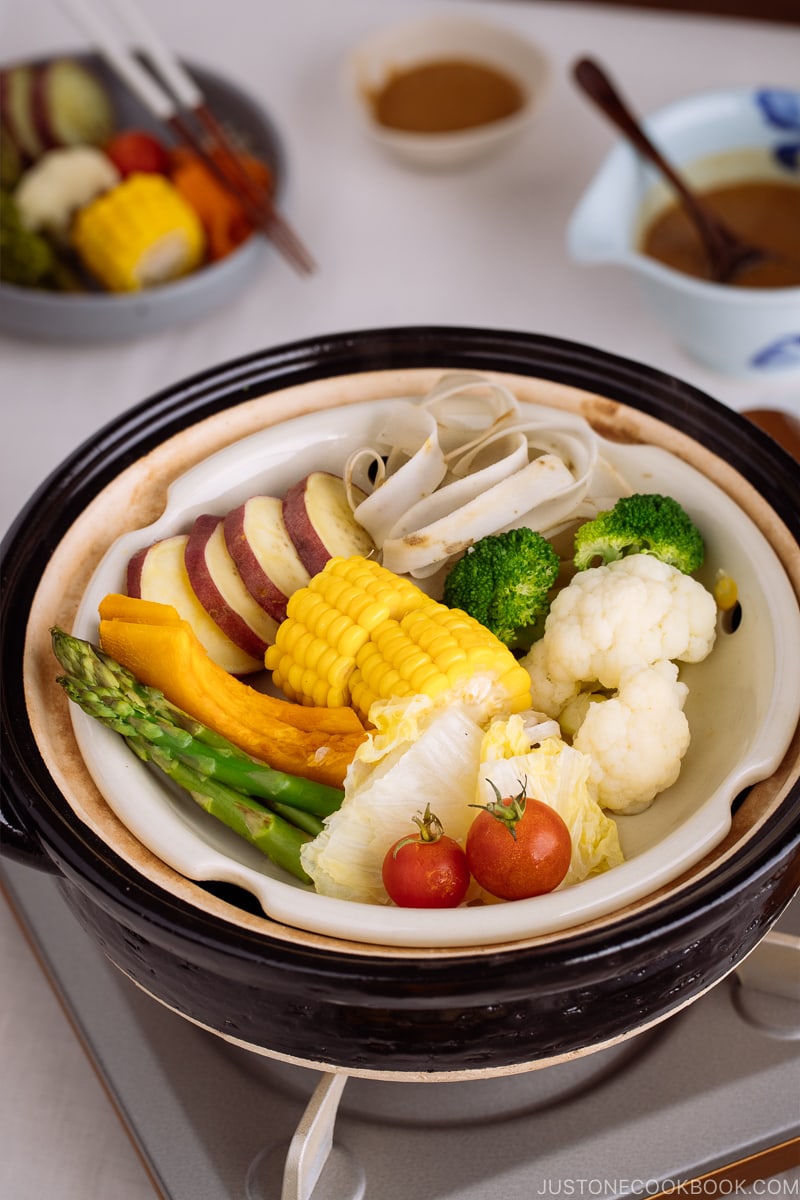
Here’s a quick guide on steaming times for vegetables.
If you want to cook several kinds of vegetables in a batch, here’s an easier method that I follow:
I usually adjust the steaming time based on how I cut the vegetables (slices vs. peels – see my recipe for gobo and carrot) and how big/small I cut them.
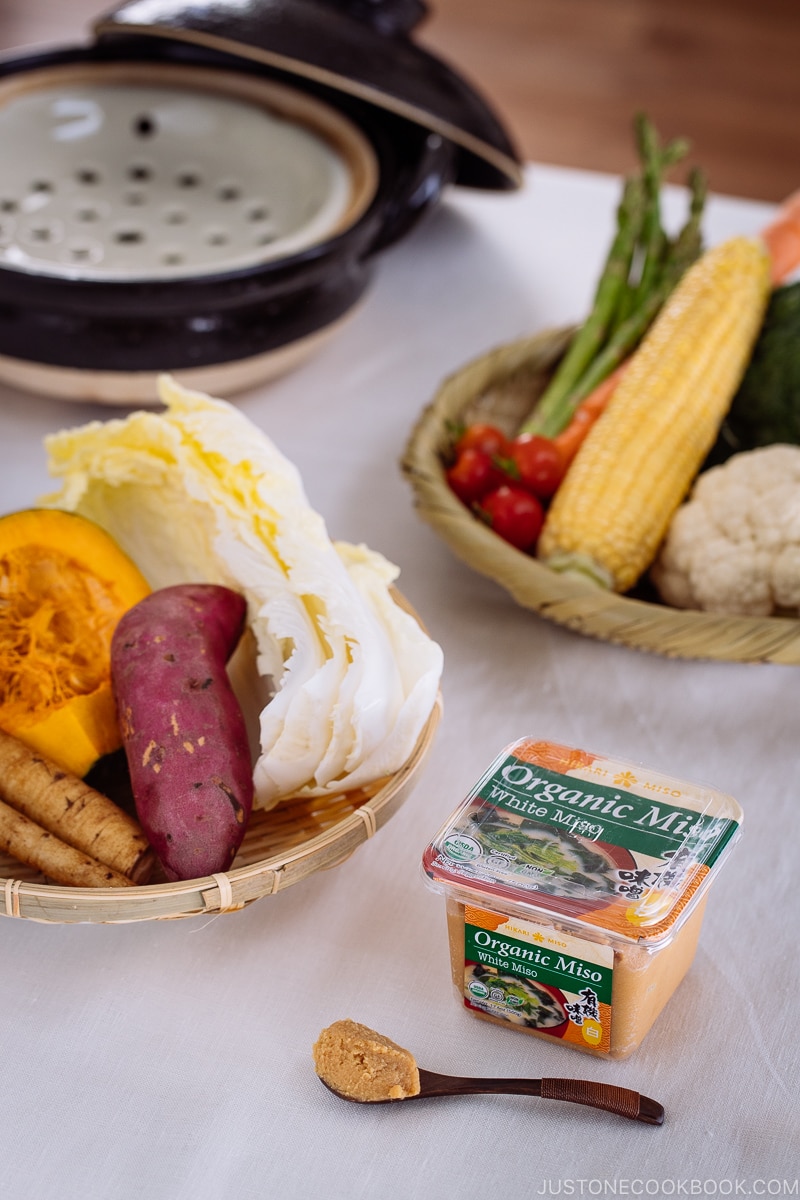
Steamed vegetables are absolutely wonderful on their own or with a very little seasoning. However, I do like to serve steamed vegetables with different Japanese-style dipping sauces once in a while, and one of our favorites is Miso Sesame Sauce.
For this Steamed vegetable recipe, I partner with Hikari Miso® and used Hikari Miso® Organic Miso – White Miso. It is made of 100% USDA Certified Organic rice and soybeans and is additive-free. It has a light yellow color original to Shinshu-style miso. A high volume of rice koji produces a mild taste and smooth texture.
If you’re interested to try it out, you can purchase Hikari Miso from a majority of Japanese/Asian grocery stores or on Amazon. It is my favorite brand of miso paste. There is also a variety of miso, each with a different flavor you can use for various purposes.
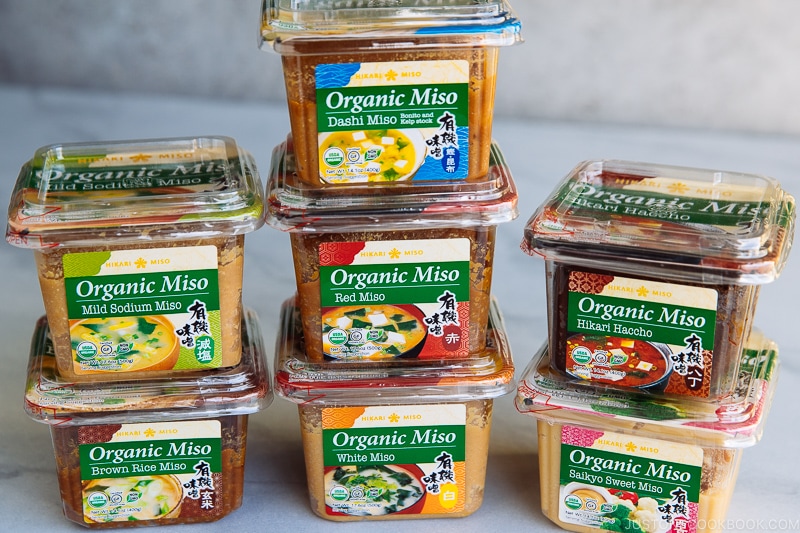
The nutty flavor and savoriness of the sauce go terrifically well with vegetables. The key is to lightly dip the steamed vegetables into the sauce, without overcoating them. You want to enjoy the natural sweetness of the vegetables and the sauce is to enhance the eating pleasure.
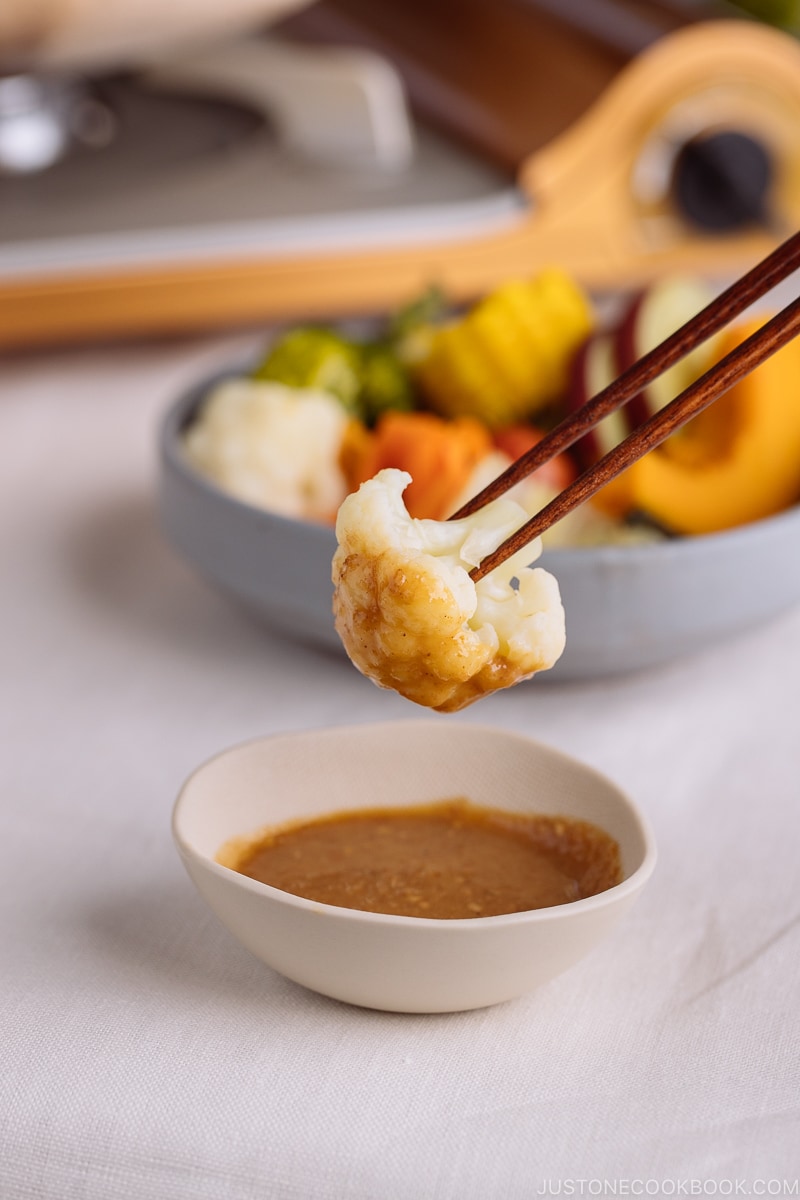
It’s always better to use a bigger pot where steam can go around the vegetables.
You’ll need at least 1 inch deep of water, just enough to steam the vegetables. You can use the leftover water for cooking. In fact, we use dashi (Japanese soup stock) to create dashi-infused steam to cook the vegetables in this recipe.
It’s important to add the vegetables after the water is completely boiling. If you add the vegetables while the water has yet to boil, the newly created steam will turn back into water droplets when it touches cold vegetables. As a result, vegetables will get more watery. Therefore, add the vegetables when there is plenty of steam coming out from the steamer.
You want to make sure lots of steam is continuously being created, and your heat setting should be on medium-high. When you add the vegetables, the temperature will drop quickly, so keep the heat on high for 2-3 minutes first.
Don’t rely on the cooking time so much. Even with the same vegetables, steaming time can be different based on how you cut the vegetables. The best way is to use a bamboo skewer and see if it goes through.

The most common way to steam vegetables is by using a pot with a good fitting lid and a metal steamer basket. What if you don’t have a steamer? Don’t worry! You can still enjoy this steamed vegetable recipe without it. Here’s a fantastic hack I learned from a friend:
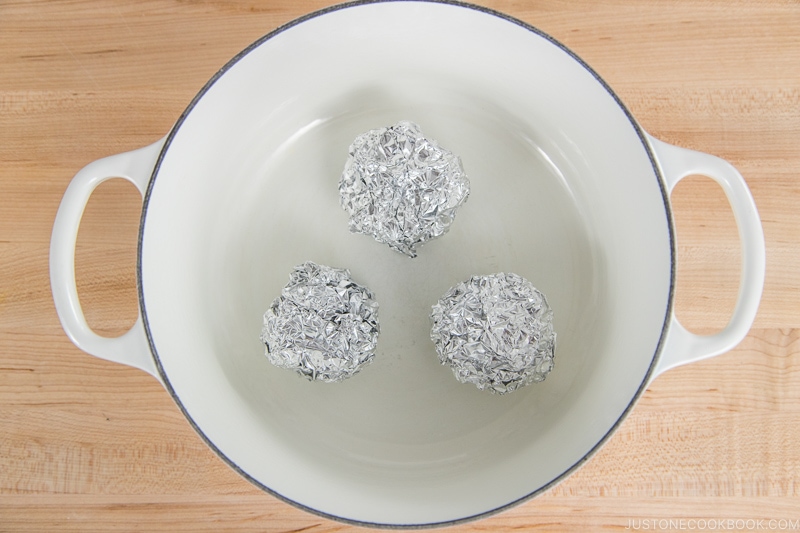
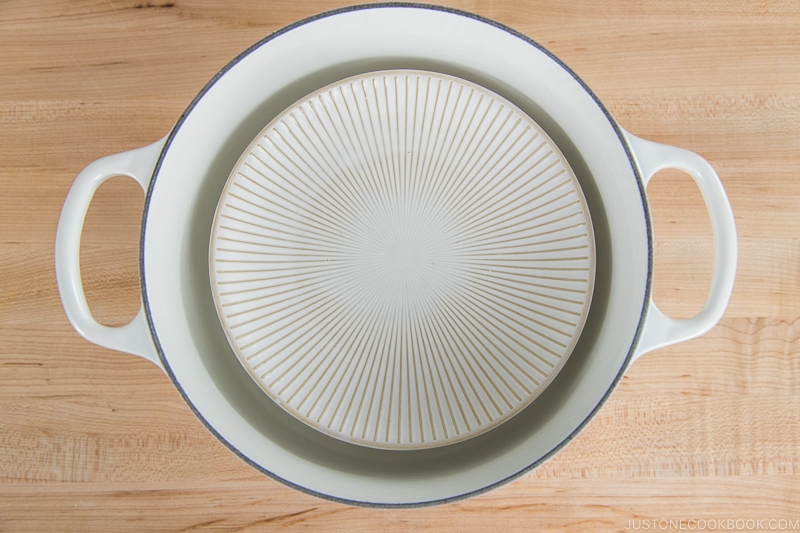
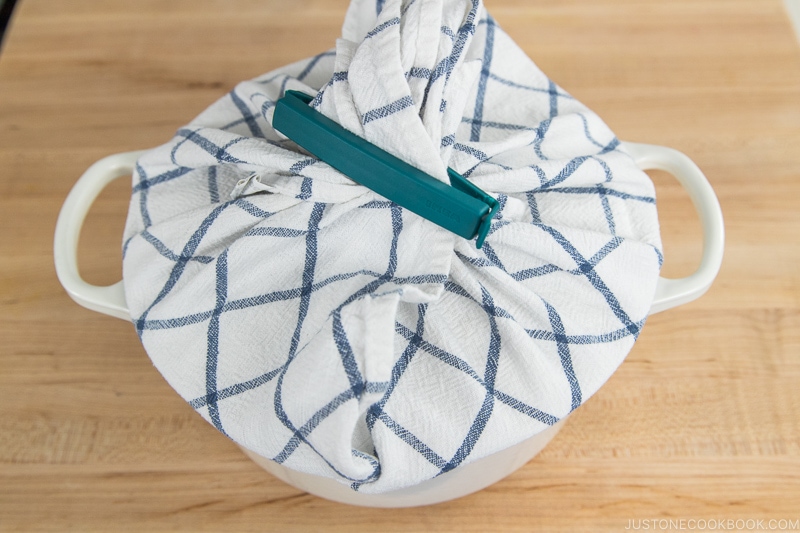
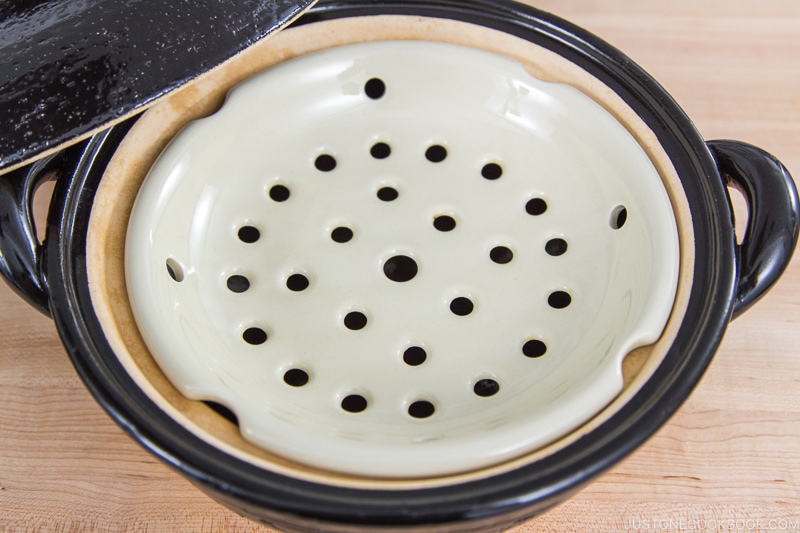
I purchased this donabe steamer at Toiro Kitchen & Supply in Los Angeles. The owner Naomi-san has a beautiful online shop where they ship worldwide.
Steamed vegetables are great all year round, but it’s more fun to serve at a table with a portable stovetop, especially in fall and wintertime. Colorful, bright, and extremely nutritious, they are what good eating is about. And don’t forget to enjoy the vegetables with the lip-smacking miso sesame sauce!
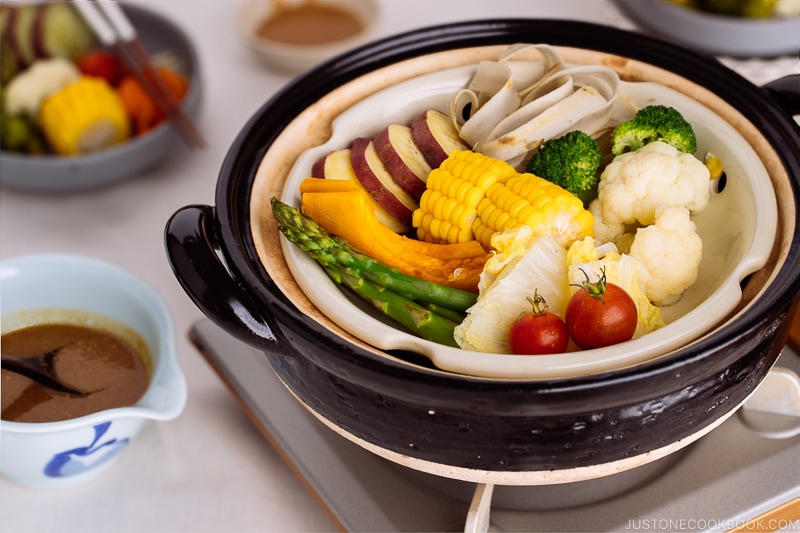
Wish to learn more about Japanese cooking? Sign up for our free newsletter to receive cooking tips & recipe updates! And stay in touch with me on Facebook, Pinterest, YouTube, and Instagram.
